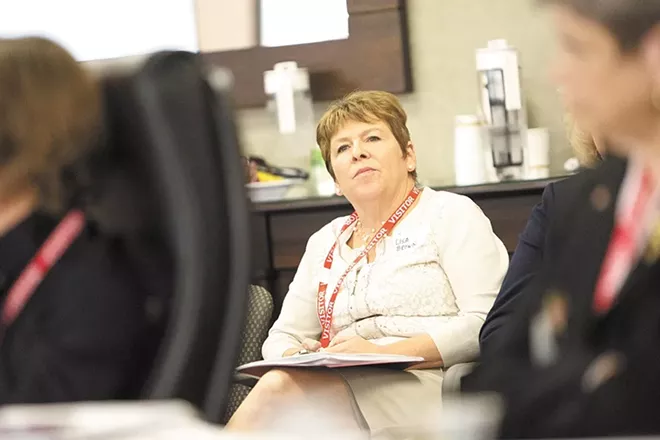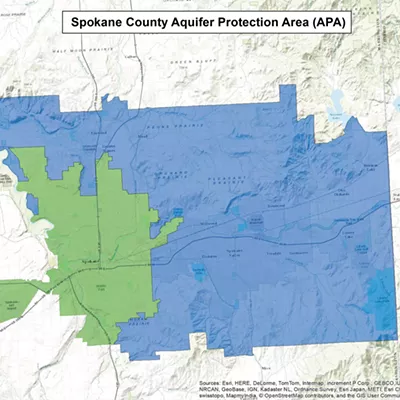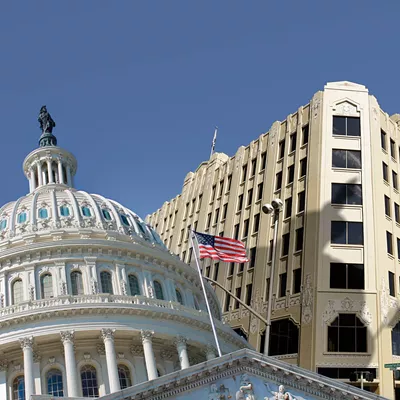
Update: Additional comments from Lisa Brown have been added.
U.S. Rep Cathy McMorris Rodgers' latest attack ad against Lisa Brown accuses Brown of voting to hike tuition by 80 percent. Lisa Brown calls those attacks "ludicrous."
To some degree, the attack is unfair: The ad relies on a Tri-City Herald editorial noting that between 2007 and 2013, tuition at Washington State University went up 81 percent.
Yet the ad's suggestion that there was one specific bill that Brown voted for that explicitly mandated that tuition would increase 81 percent isn't correct. During the recession, there were a lot of reasons why tuition skyrocketed at both private and public colleges across the nation.
And yet, Brown's responses to these attacks have obscured the crucial role she played in increasing state tuition.
"The truth matters: I did not vote to increase tuition," Brown says in a press release. "I’ve worked throughout my career to make college more affordable through the College Bound scholarship program, supporting loan forgiveness programs and Running Start, and sponsoring and passing a bill that provides tuition assistance to military members."
And yet, during the recession, year after year, Brown voted for budgets that did result in tuition increases. And, as years of newspaper articles show, she knows that.
Brown's claim that she did not vote to increase tuition is only true if you interpret it in a very narrow sense. The Legislature generally hasn't technically set tuition. Instead, it determines how much state funding public universities get and caps how much universities can limit tuition increases each year.
Yet Brown claiming that she didn't vote raise tuition is a little like if Hillary Clinton had claimed she didn't vote for a war in
During the recession, the Washington state Legislature dramatically slashed state funding and then handed universities much more leeway to raise tuition to compensate. While big increases happened across the nation, Washington's hikes were bigger than most. From 2007 to 2012 Washington state had the sixth steepest in-state four-year tuition and fee hikes in the nation, according to College Board data.
And, as Senate Majority Leader, Brown played a key role in those decisions.
Consider this Associated Press story from 2012, that took stock of the situation in final four years of Lisa Brown's tenure as Senate Majority Leader:
A decade ago, state dollars paid about 70 percent of the cost to educate an undergraduate student and tuition covered most of the rest. Those numbers have now flipped.In that same article University of Washington's
Most of that change has happened during the past four years, as the Legislature put double-digit tuition increases into the state budget to help make up for decreases in state dollars going to Washington colleges and universities.
Then, WSU President Elson Floyd also echoed the frustration.
“Over the past year we’ve witnessed a growing recognition in Olympia that we’ve cut higher education too deeply, weakening opportunities for students and the economy," Floyd said. "Now is the time for reinvestment.”
Of course, it's easy to forget just how troubled the state budgets were during the recession.
In 2009, the Legislature was facing a staggering $9 billion budget shortfall. Everything was getting cut. Back then, colleges were limited to hiking tuition by 7 percent a year. The question was whether the Legislature, as it cut deep into higher ed funding, would give colleges even more "tuition-setting authority."
"We are open to going higher than 7 percent," Brown said then. "We are really talking about it."
Indeed, in 2009, Brown voted in favor for a bill that "permits the Legislature to increase tuition above the previous 7 percent cap" and mandated that the tuition caps be set as part of the budget process.
And the ultimate budget, which Brown also voted for, gave universities the power to hike tuition by twice the amount. The Spokesman-Review outlined that the state's two-year budget outlined "tuition increases of nearly 30 percent at the state’s four-year colleges."
Even with the higher tuition costs, universities had to make additional cuts.
“It’s a very difficult and painful budget, but it’s responsible and balanced,” Brown told the Spokesman-Review then.
Thursday, Sept. 20, Brown tells the Inlander that the Legislature was in a bind. If they didn't raise the tuition cap, the legislature either had to find other areas of the budget to cut or universities would have to make drastic cuts to higher ed services,
If you criticize her decision, she says, you should say what the Legislature should have done instead.
"If someone wants to rewrite that budget and have it be a balanced budget, they have to suggest where the cuts would come from," Brown says.
Outgoing Washington Republican state Sen. Michael Baumgartner says that part of the problem was that the Legislature had increased government programs and government salaries leading up to the recession. He argues it should have started by undoing some of those changes.
"Fundamentally, at some point, it's just about prioritization," Baumgartner says. "You do have choices."
In 2010, she penned a column for the Spokesman-Review where she noted that the Legislature made up for part of its budget shortfall by "making dramatic cuts to classrooms, college enrollments
It wasn't like Brown was celebrating those cuts. In her column, Brown called for "closure of tax loopholes and raising revenues" instead of making more cuts.
But that didn't happen. One big reason why? One of Tim Eyman's famous initiatives was in place, one that required two-thirds of the Legislature to approve any tax increases.
"You had to have a two-thirds vote," Brown says. "That meant that the minority party had control of the revenue side of the equation if they wanted to."
Republicans weren't about to approve a tax increase during a recession.
In 2011, meanwhile, she lamented a budget that she said raised tuition, but, along with Baumgartner, voted for it anyway. That same year, the Legislature gave unlimited tuition-setting authority to the colleges. For two years in a row, state universities increased tuition by 16 percent.
So what happened when Republicans took control of the state Senate and Brown left the Legislature? With the economy improving, they voted to freeze college tuition hikes in 2013. And in 2015? Republicans actually pushed to decrease state tuition significantly.
But Brown points out that something else happened in 2013: The Supreme Court struck down Eyman's supermajority requirement for tax increases, giving the Legislature a lot more flexibility in budgeting.
But Baumgartner says that argument is nonsensical. All the
"Additional revenue did not pay for what we paid for in higher education," Baumgartner says. "It was prioritization."
Still, to Baumgartner, a primary force behind the push for the tuition decrease, Brown's record is clear.
"Her best defense would be to blame it all on the Great Recession and to say hard choices needed to made and to obfuscate and by talking about
But Brown points out that any budget document is a compromise.
"There
In the Spokesman-Review, however, Brown blames the tuition funding hikes on the federal government, arguing that it simply wasn't supporting higher education like it used to.
“It’s a national problem that the federal government does not support higher education the way it did when I went to college,” Brown said.
But during the recession at least, it's hard to find support for the claim that the federal government support for education shrank.
"Funding for major federal higher education programs grew significantly from the onset of the recession, even as state support fell," writes Pew Charitable Trusts. In fact, a Stanford study notes that some states actually slashed their state financial aid as the federal Pell Grant program grew at the fastest rate in history.
Federal student aid rose overall during the recession, partly because the recession meant so many students needed it. According to the Center on Budget and Policy Priorities, a left-leaning think tank, federal aid increased, but not enough to keep up with the tuition hikes
As tuition soared after the recession, federal financial aid increased. Total Pell Grant aid, the nation's primary source of student grant aid, rose by 68 percent between the 2008 and 2016 school years. This substantial boost has enabled the program not only to reach more students ― 2 million more students received Pell support last year than in 2008 ― but also to provide the average recipient with more support.
And, back in 2009, Lisa Brown knew this.
"It is true that there
The government did cut back from its initial dramatic expansion of Pell Grant expenditures in 2009, but Pell Grant awards expenditures still remained far higher than they were before the recession. So did the number of students receiving them.
Brown
"If you are covering a smaller percentage of the total cost that is a disinvestment," Brown says.
Yet the reason why the federal aid is covering has dropped is because the price of college tuition has risen so rapidly, partly because of cuts at the state level.
Jared Powell, McMorris Rodgers campaign spokesman, argues that McMorris Rodgers "has voted to support the Perkins loan program and year-round Pell grants. An increase in financial aid is needed because tuition rates have gone up so much."
In a Spokesman-Review article, Brown charged that McMorris Rodgers had voted multiple times to cut Pell Grants, while arguing that her own record sought to make college affordable, through scholarship programs, tuition waivers
"We need a representative in



























